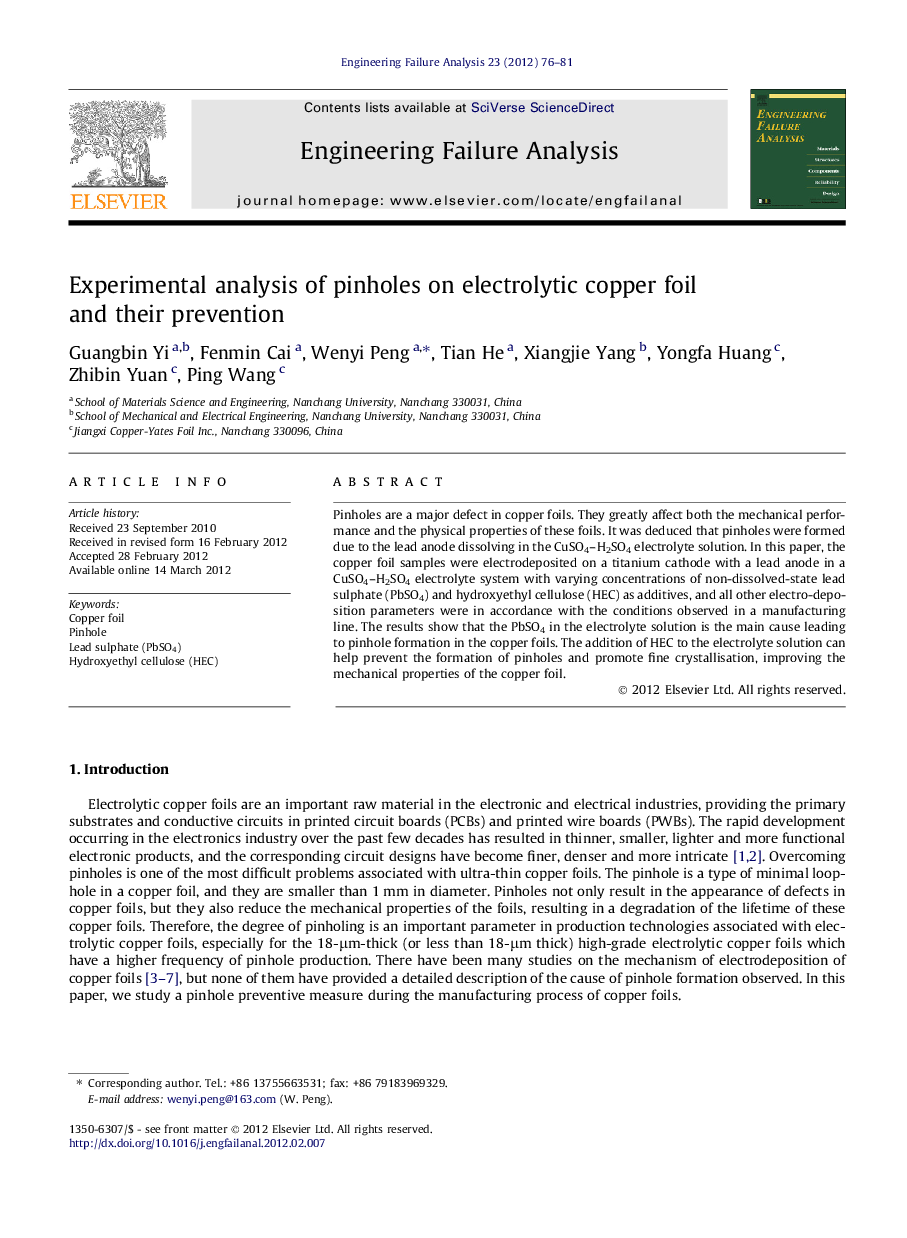| کد مقاله | کد نشریه | سال انتشار | مقاله انگلیسی | نسخه تمام متن |
|---|---|---|---|---|
| 769824 | 1463001 | 2012 | 6 صفحه PDF | دانلود رایگان |

Pinholes are a major defect in copper foils. They greatly affect both the mechanical performance and the physical properties of these foils. It was deduced that pinholes were formed due to the lead anode dissolving in the CuSO4–H2SO4 electrolyte solution. In this paper, the copper foil samples were electrodeposited on a titanium cathode with a lead anode in a CuSO4–H2SO4 electrolyte system with varying concentrations of non-dissolved-state lead sulphate (PbSO4) and hydroxyethyl cellulose (HEC) as additives, and all other electro-deposition parameters were in accordance with the conditions observed in a manufacturing line. The results show that the PbSO4 in the electrolyte solution is the main cause leading to pinhole formation in the copper foils. The addition of HEC to the electrolyte solution can help prevent the formation of pinholes and promote fine crystallisation, improving the mechanical properties of the copper foil.
► Pinholes often occur in copper foils, which certainly degrade the mechanical and physical properties.
► We found pinholes forming in a CuSO4–H2SO4 electrolyte solution with non-dissolved lead sulphate (PbSO4).
► But a certain amount of hydroxyethyl cellulose (HEC) can suppress the formation of pinholes.
► Moreover, it also promotes fine crystallisation.
► Thus, the mechanical properties of copper foils can be improved.
Journal: Engineering Failure Analysis - Volume 23, July 2012, Pages 76–81